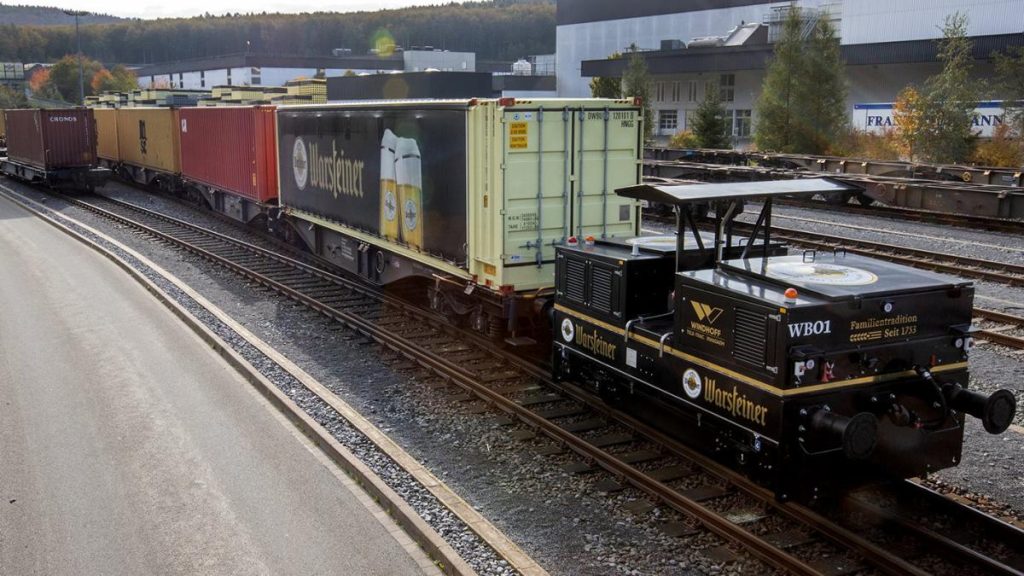The city of Warstein in North Rhine-Westphalia is not only significant for beer drinkers but also for traffic policymakers due to the presence of the Warsteiner Brewery. The brewery serves as a model for how to relieve road traffic from trucks and shift goods to rail in an area with many medium-sized companies and no dense rail network. Now, discussions are taking place along the freight route extending to Münster regarding the potential reactivation of passenger trains on the line. The opinions on this plan are divided among stakeholders.
The Warsteiner Brewery operates a container terminal called “Boxx Intermodal Logistics” on its premises, handling various goods apart from beer products. This terminal facilitates the transportation of textiles, construction materials, electronics, and wood via rail, reducing the need for individual companies to have their own rail connections. With increasing interest from businesses in utilizing rail transport, the terminal aims to expand its operations and cater to diverse logistical needs in the region.
The Westfälische Landeseisenbahn (WLE) manages the railway line from Warstein to Münster and is supported by transport companies from North Rhine-Westphalia and neighboring counties. Plans are underway to introduce battery-electric passenger trains between Münster and Sendenhorst, with the goal of creating an S-Bahn Münsterland network. Despite the high costs of implementing these plans, the benefits outweigh the expenses, especially in terms of reducing road congestion and providing a more sustainable mode of transportation.
Although there are concerns about potential noise pollution and operational challenges, the overall consensus is that reactivating passenger train services along the Warsteiner railway line could bring significant benefits to the region. With positive cost-benefit ratios and the potential to enhance public transportation options, the introduction of passenger trains could address existing mobility needs and support economic development in the area. However, some communities along the route have reservations about the impact of increased train traffic on local infrastructure and road networks.
In Erwitte, a town between Lippstadt and Warstein, the local government is cautious about intensifying rail operations due to existing road congestion issues. While there are plans for a major road bypass project in the area, the lack of comprehensive transport solutions hinders the feasibility of reactivating passenger trains. The balance between economic development, environmental sustainability, and community concerns will need to be carefully assessed before making decisions on the future of rail transport in the region.
Despite the complexities and challenges associated with reactivating passenger train services in the Warstein area, stakeholders are optimistic about the potential benefits for the local economy, residents, and the environment. By integrating railways into the region’s transportation network, businesses can access more efficient and sustainable logistical solutions, while residents can enjoy improved public transportation services. The ongoing discussions and planning processes will be crucial in determining the feasibility and implementation of passenger trains along the Warsteiner railway line.


